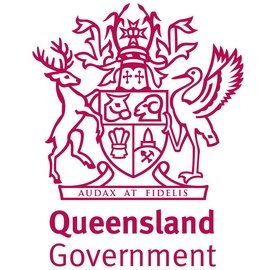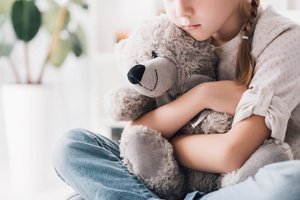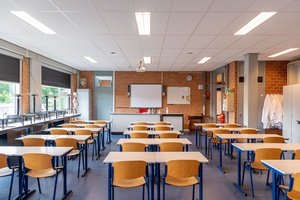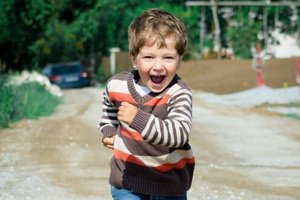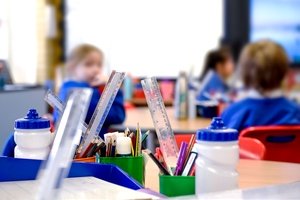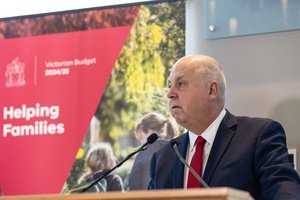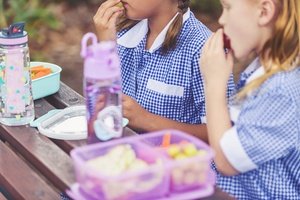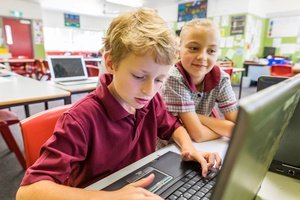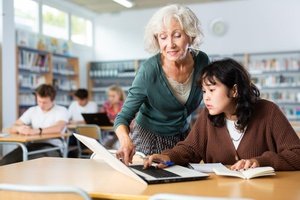Although 75 per cent of children will survive five years after diagnosis, they often live with lifelong effects from having had a tumour and treatment at a significant time in their physical and mental development.
Both malignant and non-malignant brain tumours, and their treatment (surgery, radiation and/or chemotherapy), can disrupt children’s typical development.
A brain tumour diagnosis affects not only the child, but also their family and entire personal network.
How a brain tumour can affect a child’s schooling experience and outcomes
Childhood and adolescence are a time of important physical, cognitive, and social development. A brain tumour and associated treatment can alter brain anatomy which can cause ‘late effects’ such as impaired memory, seizures, and depression and/or anxiety. Some children may have physical effects that impair their movement temporarily or permanently.
Supports to address these late effects is lacking in Australia and around the world.
It is thus not surprising that survivors of childhood brain tumours are 2.6 times more likely than their siblings without a tumour to have poor neuropsychological outcomes, as well as low education and income.
Many children miss large amounts of schooling because of treatment and late effects. Challenges to learning may arise during or soon after treatment, or several years later. Children and adolescents may appear to be coping well but still have additional learning needs.
Some children and adolescents experience bullying and lose friends during and after treatment. This is often triggered by a physical change in appearance (e.g. losing their hair), late effects that affect social interactions (e.g. the ability to recognise people’s faces), or a lack of understanding about cancer (e.g. thinking you can ‘catch’ it like a cold).
Across a child’s education, their teacher and school can provide a unique set of supports. In our recent review of research evidence on families’ schooling needs, and our ongoing work with families at the Queensland Children’s Hospital, we have identified some ways in which teachers and schools can support children.
What can teachers and schools do to support children with brain tumours?
In Australia, it is the legal responsibility of the child’s school to ensure educational opportunities are equitably provided to all, regardless of illness and disability.
It is important to work with the child and their family about what their situation is and their needs – there’s no one-size-fits-all. Some will want and need a lot of support while others may not. Some children do not wish to be treated differently than their peers.
Teachers report feeling unsupported to assist students with a history of brain tumour. Teachers and schools are currently navigating an extremely difficult pandemic-induced work environment. Families have, however, identified considerations for how schools can support their child:
- An initial meeting with the parent/s or primary caregiver/s, the principal, wellbeing coordinator, and teacher/s to provide an overview of their child’s history and needs, and to discuss a long-term plan for their schooling. The student may also be included in the meeting or follow ups to decide what supports may be helpful for them.
- Open, clear, and ongoing communication between the child, family, principal, and teacher/s about their child’s progress and needs. Regular check ins can ensure the strategies in place are working and allow the support team to determine if any changes are needed.
- The school must address the child’s physical needs. For example, to be wheelchair accessible or to have a teacher’s aid available to assist in moving between classrooms - some late effects can cause children and adolescents to be easily disorientated.
- Children particularly appreciate teachers and parents giving much encouragement and celebrating their successes.
- Giving copies of class notes to older children and adolescents enables them to concentrate on what is being said in the classroom.
- Offer flexible testing arrangements. For example, testing alone to support concentration or having a teacher’s aid to assist in reading and interpreting questions.
- In high school, having a learning support person assigned to the student who can assist in coordinating several teachers and the teen’s curriculum mapping.
Learning is not just academic but also social and emotional. Going to school is a time of developing and learning about relationships and the social world.
Although more laboursome to implement, a school-wide social and emotional learning (SEL) approach may be less likely than individual approaches to burden diagnosed children and their families.
SEL aims to teach the knowledge, attitudes and skills needed to enhance empathy and mental wellbeing management (such as emotional regulation and/or awareness), and the development and sustainment of positive relationships that benefit all children and adolescents.
What services are available to assist teachers and schools to support families?
There are few school re-entry programs available for childhood cancer and little evidence of their effectiveness. However, there are many fabulous Australian organisations that have resources available, including:
- Camp Quality offers a free education program to schools from kindergarten to year 6 that explains cancer, dispels common myths, and facilitates ongoing conversations. They have also produced associated lesson plans and resources for teachers.
- Cancer Council’s Cancer in the School Community offers content to assist teachers to support children and others at school with cancer.
- EdMed is a free, one-hour professional development session to educate teachers on assisting students to return to school after a serious illness.
- Tutoring support programs are available for children through BrainChild and the Ronald McDonald House Charities.
American Society of Clinical Oncology’s ‘Tips for talking with classmates’ includes suggestions for teachers to facilitate positive peer communication around cancer.
Children and adolescents diagnosed with a brain tumour are at risk of experiencing lifelong physical, cognitive, and social impairments. As a society, we have an obligation to meet their needs and foster their full social and economic participation. Teachers and schools are central to this.





